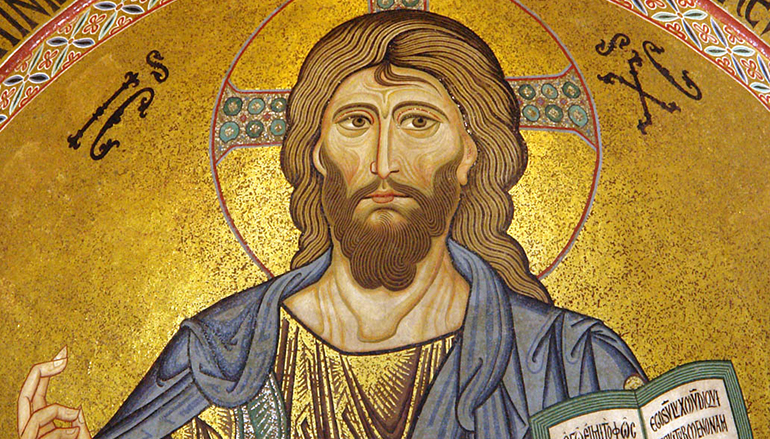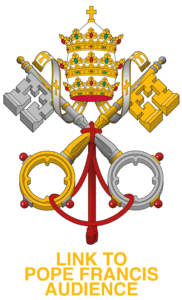During this week’s General Audience, Pope Francis started his catechesis for the Jubilee which will take the theme, Jesus Christ our hope.
Dear brothers and sisters, good morning!
Today we will begin the cycle of catechesis that will continue throughout the Jubilee Year. The theme is “Jesus Christ our Hope”: for He is the aim of our pilgrimage, and He Himself is the way, the path to follow.
The first part will look at the childhood of Jesus, which is narrated to us by the Evangelists Matthew and Luke (cf. Mt 1-2; Lk 1-2). The Infancy Gospels recount Jesus’ virginal conception and His birth from Mary’s womb; they recall the messianic prophecies fulfilled in Him and speak of the legal paternity of Joseph, who grafted the Son of God onto the “trunk” of the Davidic dynasty. We are presented with an infant, child and adolescent Jesus, submissive to his parents and, at the same time, aware that He is wholly devoted to the Father and His Kingdom. The difference between the two Evangelists is that while Luke recounts the events through Mary’s eyes, Matthew does so through Joseph’s, insisting on this unprecedented fatherhood.
Matthew begins His Gospel and the entire New Testament canon with the ‘genealogy of Jesus Christ, the son of David, the son of Abraham’ (Mt 1:1).
It is a list of names already present in the Hebrew Scriptures, to show the truth of history and the truth of human life. In fact, “the Lord’s genealogy consists of the true story that includes a number of figures who are problematic to say the least, and the sin of King David is also emphasized (cf. Mt 1:6). Yet, everything culminates with Mary and Christ (cf. Mt 1:16)” (Letter on the Renewal of the Study of Church History, 21 November 2024). Then, there appears the truth of human life that passes from one generation to the next, bringing three things: a name that encompasses a unique identity and mission; belonging to a family and a people; and finally, the adherence of faith to the God of Israel.
Genealogy is a literary genre, that is, a form suitable for conveying a very important message: no one gives life to himself, but receives it as a gift from others. In this case, the chosen people, and those who inherit the legacy of faith from their forefathers, in passing on life to their children, also convey to them the faith in God.
Unlike the genealogies of the Old Testament, however, where only male names appear – because in Israel it is the father who imposes the name on his son – in Matthew’s list of Jesus’ ancestors, women also appear. We find five of them: Tamar, the daughter-in-law of Judah who, left a widow, pretends to be a prostitute in order to ensure an offspring for her husband (cf. Gen 38); Racab, the prostitute of Jericho who allows the Jewish explorers to enter the promised land and conquer it (cf. Jas 2); Ruth, the Moabite who, in the book of the same name, remains faithful to her mother-in-law, takes care of her and will become King David’s great-grandmother; Bathsheba, with whom David commits adultery and, after having her husband killed, begets Solomon (cf. 2 Sam 11); and finally Mary of Nazareth, wife of Joseph, of the house of David: from her the Messiah, Jesus, is born.
The first four women have in common not the fact that they are sinners, as is sometimes said, but the fact that they are foreign to the people of Israel. What Matthew brings out is that, as Benedict XVI has written, “through them the world of the Gentiles enters … into Jesus’ genealogy – his mission to Jews and Gentiles becomes visible” (The Infancy Narratives, Milan-Vatican City 2012, 15).
While the four previous women are mentioned alongside the man who was born of them or the one who begot him, Mary, on the other hand, acquires particular prominence: she marks a new beginning. She herself is a new beginning, because in her story it is no longer the human creature who is the protagonist of generation, but God Himself. This is clearly seen from the verb “was born”: “Jacob [was] the father of Joseph the husband of Mary, of whom Jesus was born” (Mt 1:16). Jesus is the son of David, grafted by Joseph into that dynasty and destined to be the Messiah of Israel, but He is also the son of Abraham and of foreign women, destined therefore to be the “Light of the Gentiles” (cf. Lk 2:32) and the “Saviour of the world” (Jn 4:42).
The Son of God, consecrated to the Father with the mission of revealing His face (cf. Jn 1:18; Jn 14:9), enters the world like all children of man, so much so that in Nazareth He will be called “son of Joseph” (Jn 6:42) or “son of the carpenter” (Mt 13:55). True God and true man.
Brothers and sisters, let us awaken in ourselves the grateful memory of our ancestors. And above all, let us give thanks to God, who, through Mother Church, has generated us to eternal life, the life of Jesus, our hope.


